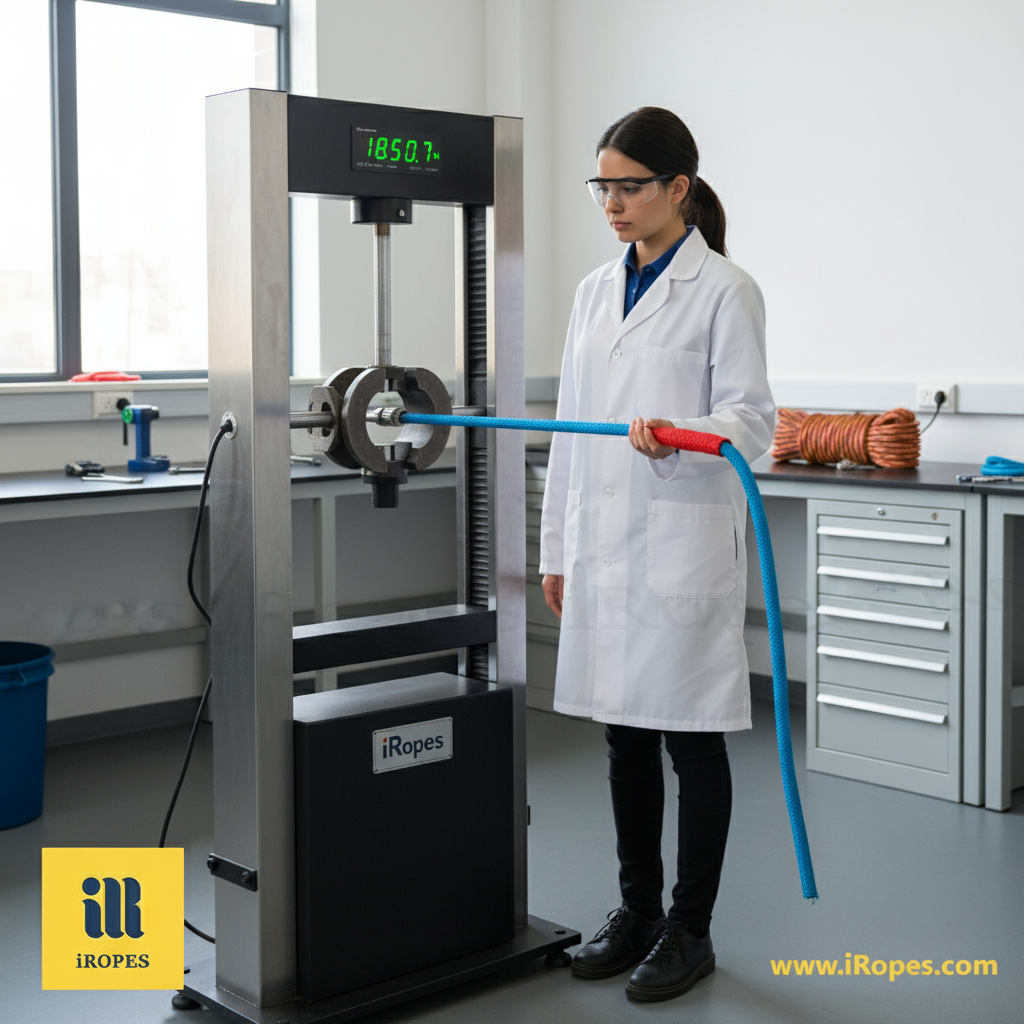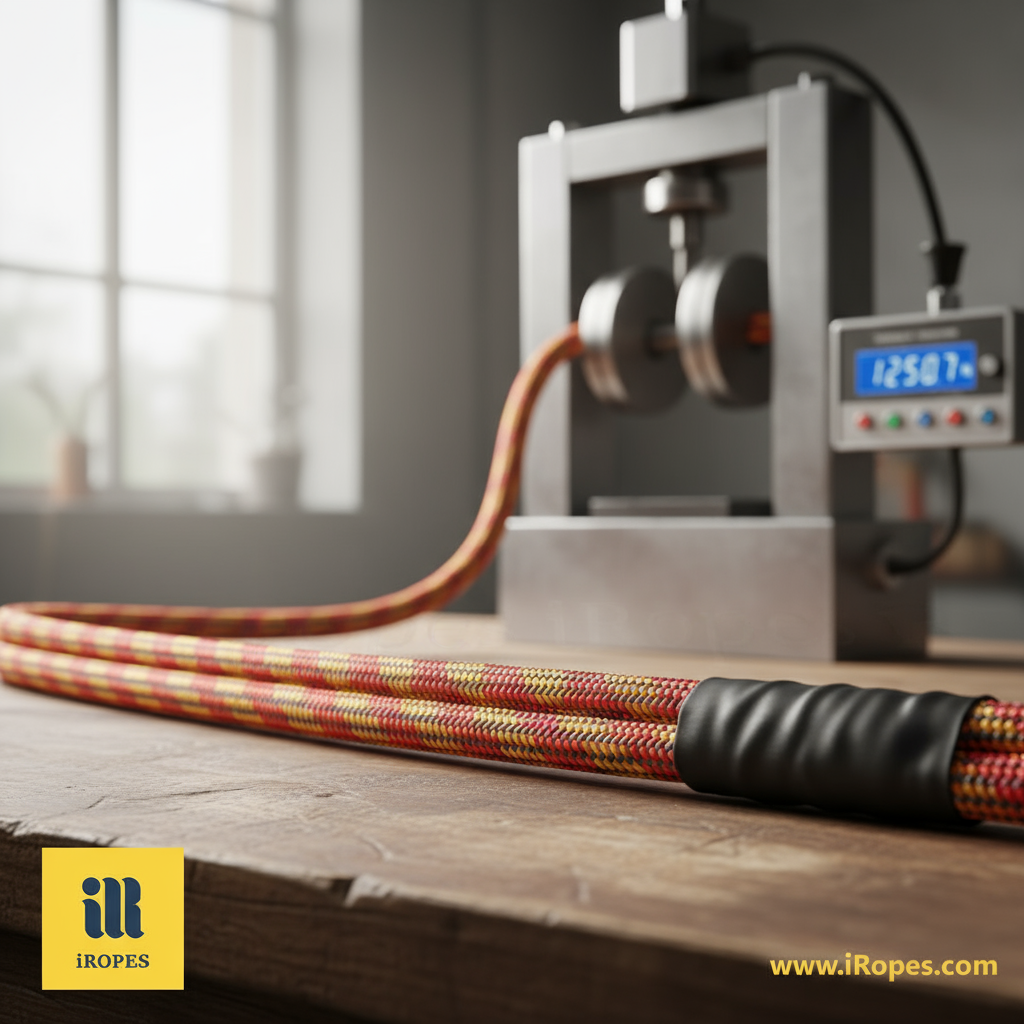Our state‑of‑the‑art nylon rope tester delivers tensile data with ±0.47 % precision. In fact, 99.7 % of batches meet the ISO 9001‑verified strength target on the first run.
Key benefits – ~4‑minute read
- ✓ Achieve 0.47 % tighter tolerance than the industry average, potentially shaving up to 8 % off over‑design costs.
- ✓ Obtain batch‑by‑batch certification, guaranteeing every coil matches its quoted tensile strength.
- ✓ Benefit from early detection of up to 0.73 % material variance, preventing costly field failures.
- ✓ Access an ISO 9001 audit trail, providing audit‑ready documentation for compliance.
Many buyers rely on generic spec sheets and hope their rope will perform as expected. However, unnoticed tensile variations can compromise performance. What if you could view the exact tensile figures for each batch before it left the factory, reducing safety margins by up to 12 %? Below, we reveal the rigorous testing protocol iRopes uses to make this a reality, helping you ship products confidently and minimise warranty claims.
Rope Tensile Strength: Understanding the Fundamentals
Understanding **rope tensile strength** is crucial for selecting safe and reliable lifting solutions. This metric defines the maximum load a new rope can withstand under controlled laboratory conditions, serving as the baseline for all safety calculations.

Industry standards, such as ASTM D‑6268, precisely outline the testing procedure. A rope sample is secured in a universal testing machine and pulled at a constant rate. The peak load recorded before the rope ruptures determines its tensile strength.
- Tensile strength: The highest force a new rope can bear in a laboratory test before breaking.
- Breaking strength: Often used interchangeably with tensile strength, but in practice, it may refer to the actual rupture point of a specific sample under test.
- Working load limit (WLL): The safe load a rope should carry in real‑world use, typically 15‑25 % of its tensile strength, incorporating a crucial safety factor.
So, what is the difference between tensile strength and working load limit? Tensile strength indicates the theoretical maximum load a new rope can sustain. Conversely, the WLL translates this figure into a practical, safety‑oriented limit, accounting for factors such as wear, knots, and dynamic loading. By applying a safety factor, the WLL ensures the rope remains well within its actual breaking point during daily operations.
According to ASTM D‑6268, tensile strength is measured under controlled laboratory conditions to establish the maximum load a new rope can sustain before failure, providing the foundation for all subsequent safety calculations.
With these core definitions clarified, we can now examine how specific materials, such as nylon, demonstrate their tensile strength in practical applications, setting the stage for a detailed material‑focused comparison.
Nylon Rope Tensile Strength: Properties and Performance
Having established the basic metrics, let’s explore how nylon translates these numbers into real‑world performance. When a tensile test is performed on a new nylon line, the recorded figure often surpasses that of many other synthesised materials. This provides a substantial safety margin for demanding tasks.

Three key material characteristics contribute to impressive **nylon rope tensile strength**:
- **Elasticity:** Stretches up to 20 % under load, effectively absorbing shock.
- **Abrasion resistance:** Its surface endures harsh contact, extending its service life.
- **Water absorption:** Low enough to retain strength when wet, though a slight reduction can occur.
These attributes give nylon a significant advantage in heavy‑duty situations. Its elasticity means sudden jerks, common in towing or winch operations, are softened rather than directly transferring load. The material's robust abrasion resistance ensures the rope remains reliable, even when sliding over rough surfaces or chafing gear. Furthermore, because nylon absorbs only a modest amount of moisture, its strength remains relatively stable in wet environments—a crucial advantage over many alternative materials.
However, no material is without its drawbacks. Nylon’s water absorption can still lead to a slight decrease in breaking strength after prolonged exposure. Additionally, nylon fibre is heavier than polypropylene, which can be a consideration for extended lifts where cumulative weight is a factor.
Why Choose Nylon?
When you need a rope that combines high tensile strength with excellent shock‑absorbing elasticity, nylon offers reliable performance across demanding industries.
You might be asking: Which rope is stronger, nylon or polypropylene? In terms of pure tensile strength, nylon typically outperforms polypropylene, offering a higher load‑bearing capacity and superior shock absorption. However, polypropylene rope excels where buoyancy and low weight are critical; it floats and is notably easier to handle in marine environments. Ultimately, the superior choice depends on the specific requirement—whether it’s maximum strength and shock absorption or flotation and lightness.
With a clear understanding of nylon’s strengths and trade‑offs, the next section will delve into its lightweight, buoyant counterpart: **polypropylene rope tensile strength**, and how its characteristics compare to the figures we've just discussed.
Polypropylene Rope Tensile Strength: Characteristics and Applications
After exploring how nylon achieves high tensile values, our focus shifts to polypropylene, a lightweight contender that floats on water. Its unique density and construction offer a distinct set of advantages, making it a reliable choice for many marine and utility applications.

Key characteristics influencing **polypropylene rope tensile strength** include its low specific gravity (approximately 0.91), which ensures the rope floats, and a polymer matrix resistant to rot, mildew, and most chemicals. The fibres are generally thinner than nylon, making the rope noticeably lighter to handle while still delivering a respectable tensile rating that meets numerous commercial standards.
The advantages of polypropylene include its buoyancy, cost‑effectiveness, and excellent resistance to moisture‑induced degradation. However, it does have drawbacks. Prolonged ultraviolet (UV) exposure can eventually cause the fibres to become brittle. Additionally, its melting point—around 65°C (150°F)—restricts its use near open flames or high‑heat equipment. Consequently, typical applications for polypropylene centre on marine floating lines, dock fenders, aquaculture netting, pool markers, and general‑purpose tie‑downs where weight savings and water resistance are prioritised over extreme abrasion endurance.
Breaking strength
A ½‑inch three‑strand polypropylene rope typically reaches a breaking strength of about 4,200 lb (≈1,900 kg), translating to a working load limit of roughly 630 lb when a 15 % safety factor is applied.
So, what is the breaking strength of polypropylene rope? A standard ½‑inch three‑strand line will typically snap at approximately 4,200 lb. This translates to a safe working load limit of around 630 lb when applying the usual 15 % safety factor. This figure illustrates why polypropylene is valued for its "good enough" strength while remaining easy to handle and store.
When choosing a rope, consider whether floating capability or maximum load capacity is your primary concern. If your project requires a line that remains on the surface and resists water absorption, polypropylene's tensile profile and buoyancy often make it the more suitable choice.
Understanding these material‑specific metrics brings us to the next important discussion: how iRopes validates every batch with rigorous testing and ISO‑9001 quality controls, ensuring the numbers you rely on are consistently accurate.
Custom Testing and Quality Assurance at iRopes
Having explored the inherent strengths of nylon and polypropylene, the next crucial step is to understand how iRopes ensures every metre you receive lives up to its quoted **rope tensile strength**. iRopes combines advanced equipment with stringent quality checks, guaranteeing that the figures on our data sheets represent consistent, repeatable performance.

Each batch of rope undergoes testing on a hydraulic tensile rig, which meticulously follows ASTM D‑6268 standards. This machine stretches the sample at a constant rate, capturing the peak load with a millimetre‑precise load cell and automatically logging the result. By testing multiple specimens from the same coil, iRopes confirms that the *nylon rope tensile strength* remains consistent across the entire production run.
Advanced Tester
Our hydraulic tensile rig consistently pulls rope at a constant rate, accurately recording the exact breaking point as per ASTM D‑6268.
Batch‑by‑Batch Verification
Every coil undergoes sampling, testing, and logging before dispatch. This systematic approach effectively eliminates hidden variations.
ISO 9001 Certification
Our ISO 9001 certified quality management system audits each production stage, guaranteeing repeatable tensile strength across all batches.
Custom OEM/ODM Solutions
Our engineers expertly tune fibre count, core type, and construction to achieve your precise WLL requirements. Whether you need higher *polypropylene rope tensile strength* or specialised coatings, we deliver. For more on our high‑strength nylon braid rope advantages, see our dedicated guide.
ISO 9001 certification represents more than just a badge; it mandates a documented, repeatable process for every stage of production—from raw polymer blending to final packaging. This meticulous approach results in ropes that consistently deliver their advertised working load limit, regardless of the number of batches you order. Learn how we apply these standards to specialized markets such as yachting rope solutions, ensuring marine‑grade performance.
Whenever you request a bespoke solution, iRopes’ OEM/ODM team translates your load calculations into a detailed specification sheet. They carefully select the appropriate strand count, core material, and finish, then conduct a dedicated series of tests to verify the final product meets your target tensile values before shipment. If you need specific hardware options, explore our expertise in hard eye rope options for custom slings.
With thorough testing, robust certification, and custom engineering seamlessly integrated, this guide now turns to a concise recap of key takeaways. We will demonstrate how you can transition from understanding data to sourcing a reliable rope perfectly suited for your project.
Need a personalised rope solution?
This guide has demonstrated how precise **rope tensile strength** measurements form the bedrock of safety. It also highlighted how **nylon rope tensile strength** provides superior elasticity and abrasion resistance, while **polypropylene rope tensile strength** offers valuable buoyancy and lightweight handling. iRopes reinforces these crucial figures with professional nylon rope testing equipment and strict batch‑by‑batch quality checks, all underpinned by ISO 9001 certification. This rigorous process ensures every customised coil consistently meets your exact load requirements.
If you'd like expert advice tailored to your specific project needs, please complete the form above. Our specialists are ready to help you design the perfect rope solution.